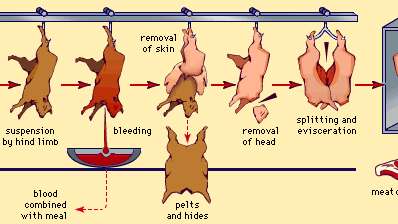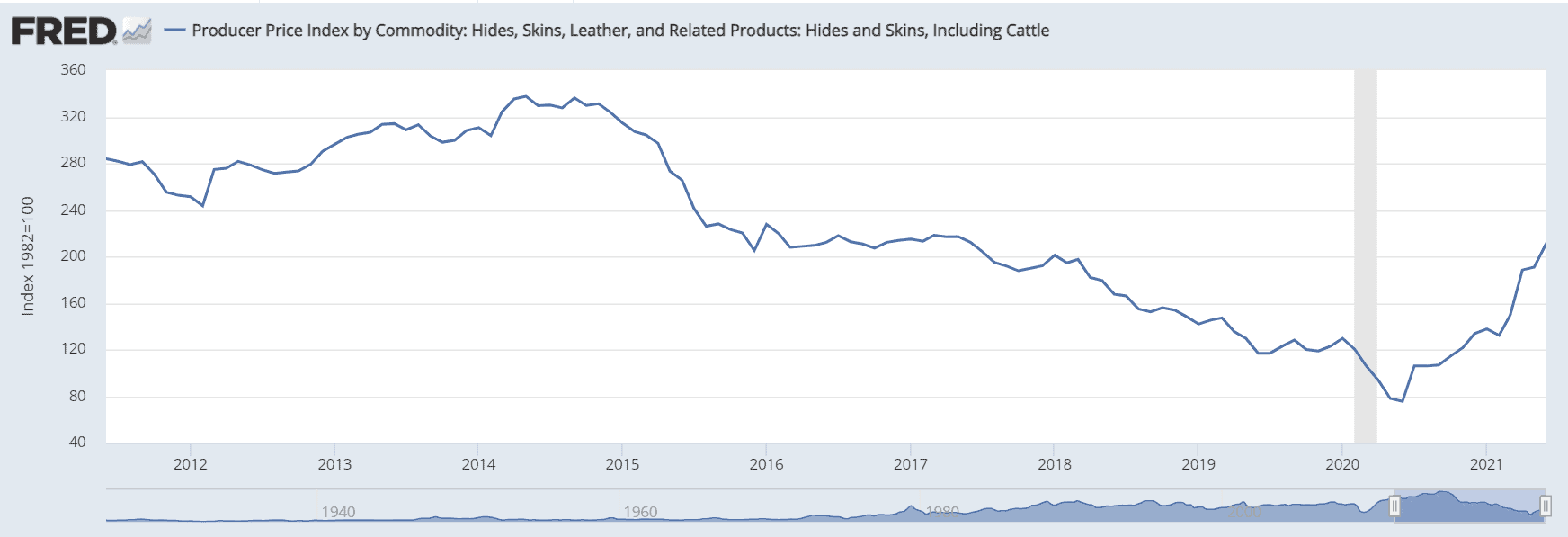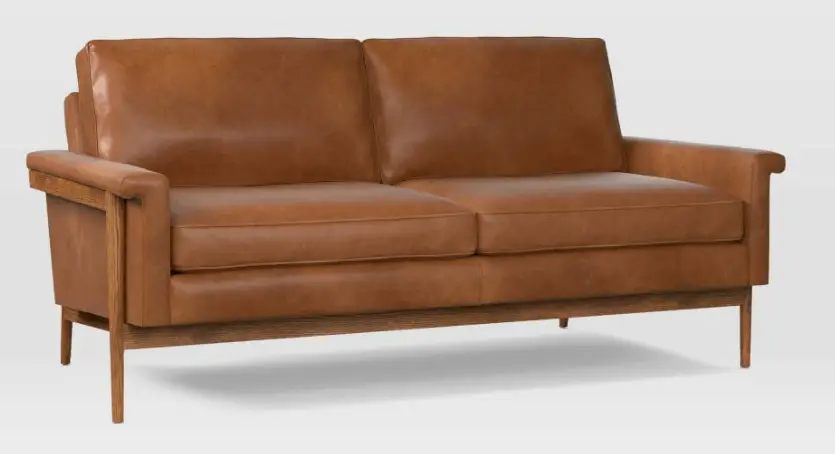In recent years consumers have become more focused on how the production of items might impact the environment. In addition, buyers have shifted their attention to the potential harm of animals in the manufacturing process.
Given that the production of leather furniture involves the hides of cows, many often wonder if cows are killed for the production of leather? I wasn't sure of the exact answer on this, so I decided to do some extensive research on the topic. My conclusion?
Cows are not killed for their hides, but rather are a byproduct of the meat industry. As a byproduct, this means that a cow is slaughtered for the meat, and not solely for the intention of creating leather.
There are of course two sides to the story, animal rights advocates such as Peta argue that leather is not a byproduct, instead calling it a co-product of the meat industry, something that I initially thought made a lot of sense.
But after examining the nuances of the industry and speaking to a few industry experts, my opinion steered back to that 'leather is a byproduct' argument.
Are Cows Harmed In The Production Of Leather?
Leather gets its start via leftover hides from the meat industry that are purchased by leather factories, known as 'tanneries'. Ultimately a cow is slaughtered for meat, with their skin, or hides sold to leather manufacturers. Note that the hide is only one of the non-meat products sold from the cattle.
Learning about the slaughter of cows was a rather disturbing journey for me to explore. Of course, I knew that it happened, but reading about it was rather eye opening. I won't go into the gory details, but this photo from Britannica is probably all we need to know at this point.

Image courtesy Britannica
Cattle are typically stunned mechanically before slaughter, aimed at rendering them unconscious before death, either with blunt force, an electrical shock or carbon dioxide. It was even made law back in 1958 by President Eisenhower via the Federal Humane Methods of Slaughter Act, stating that all meat companies market must provide stunning by mechanical, electrical, or chemical means.
And even many religious groups have fought back against the stunning of animals before slaughter. For example, kosher-certifying authorities believe that stunning itself causes a lot of suffering to the animal, which is totally against the objective of reducing animal pain.
Whatever the case, the process is ugly, but for a world obsessed with meat (and of course leather) it is an unfortunate reality - there is no truly humane method of slaughter.
Is Leather A Byproduct Or A Coproduct Of The Meat Industry?
While I don't like to envision a cow being slaughtered (you can head over to PETA for any of those graphic images) – the facts are that unless every person on this planet stops eating read meat, it will keep happening.
And while selling cow hides is profitable, in recent years, leather demand has dwindled, leading to stockpiles of leather hides around the country. Consumers are now gravitating towards more animal friendly or vegan type leathers. According to LeatherMag.com, raw hide sales in April were the lowest level since January 2018.
And a cattle hide used to generate roughly 50% of the overall value of a cattle, but in recent years that number has fallen significantly, in some cases below 10% of the overall value of the cow. Although prices have rebounded a bit in recent months.

You can look up the current pricing on cowhides at the USDA website. For example the price on a butt branded steer hide is currently at around $57. The non meat portion of the cattle (also known as the drop credit) has typically accounted for roughly 8-10% of the overall steer value, but this has dropped in recent years.
Note that the hide is only one part of the drop credit which includes other non-meat items such as tallow and bones. Thus for a steer that might cost around $1500, the hide is still a very tiny portion of the overall value.
I spoke to Hidenet's Vera Dordick who echoed this sentiment:
"The argument that leather is a co-product of the meat industry doesn't hold up. A cattle farmer isn't going to spend in excess of two years raising a cow in order to generate only $50 for a hide and maybe a few hundred more dollars for any other drop credits"
- Vera Dordick, CEO, Hidenet
Thus, it's clear to me, that a cow's life is sacrificed not for the production of a leather sofa, but for the welfare of feeding our global population.
The first choice is not to kill the cow in order to produce leather furniture.
And I can 100% understand if someone has an issue with purchasing a leather couch because of concerns regarding the inhumane treatment of animals. I've seen some videos about slaughterhouses in India where cows are being skinned alive and slaughtered on the ground with their heads cut off. But this isn't how cow leather is made in other countries with more humane standards.
Note, I'm posting here what is certainly a biased view from the Leather and Hide Council of America:
There is no rational argument that can support the claim that the hide/leather are anything other than a secondary and inevitable byproduct formed from cattle and beef biological processes. To reiterate, the value of the hide ranges historically from 6-8% of the overall live value of the cattle, to more recent lows of 1% of the value of the total animal – figures that hardly offer an economic incentive to process an animal purely for leather production purposes.
Stephen Sothmann - Leather & Hide Council of America
Are There Any Good Animal Friendly Leather Alternatives?
The typical choice for anyone seeking an animal friendly leather product is a synthetic type leather, which is often referred to as 'vegan' leather or faux leather. These alternative leathers are good choices for anyone concerned about the harm of animals, but unfortunately the materials in terms of furniture is not all that durable.

This West Elm Vegan Leather Sofa Is Quite Attractive and Animal-Friendly
Some faux leathers look quite good, and I would expect them to last a while, but the durability is my foremost concern. Faux leathers are prone to tear and peel, due to the fact that most vegan leathers are made from polyurethane, a type of plastic. Go for one if you are against leather, it's fine, but just know that it might not last all that long.
One interesting thing I was reading recently involved the creation of a vegan leather using mangoes! Not ready for primetime of yet as the video states, but will be interesting to watch how technology might ultimately come up with more sustainable ways at creating other leather-like products.

